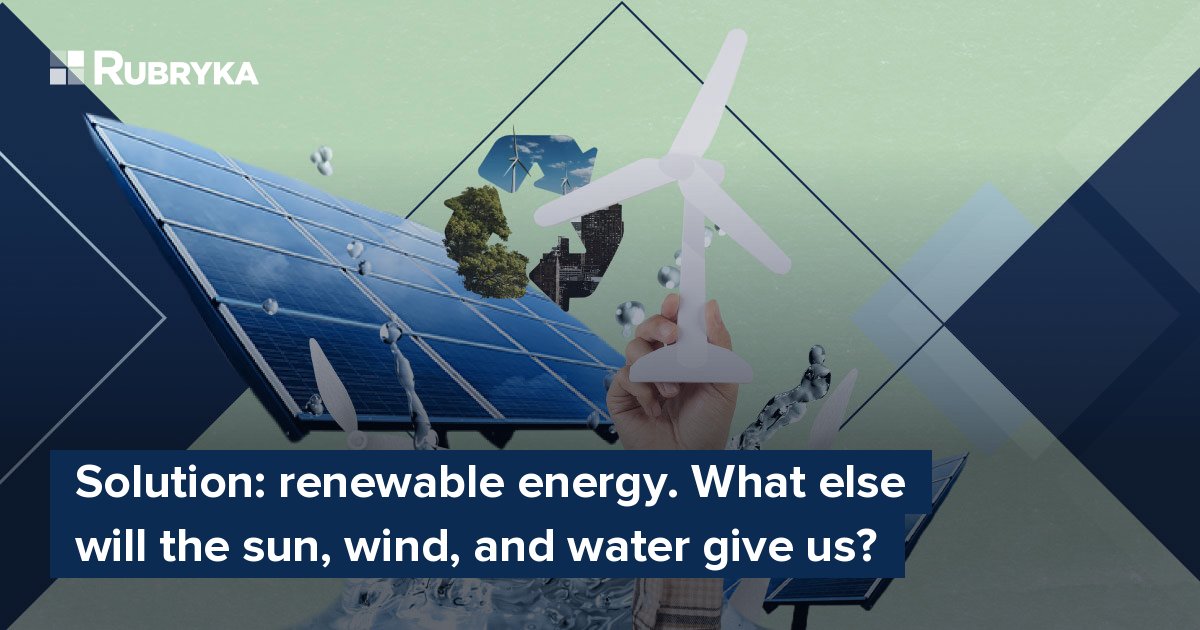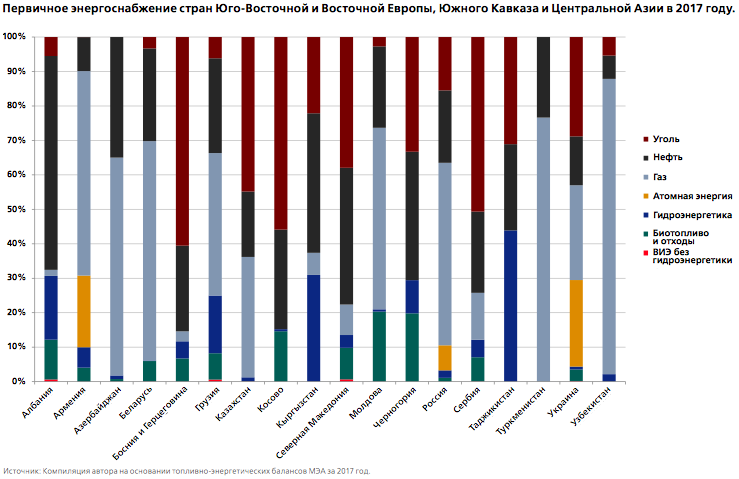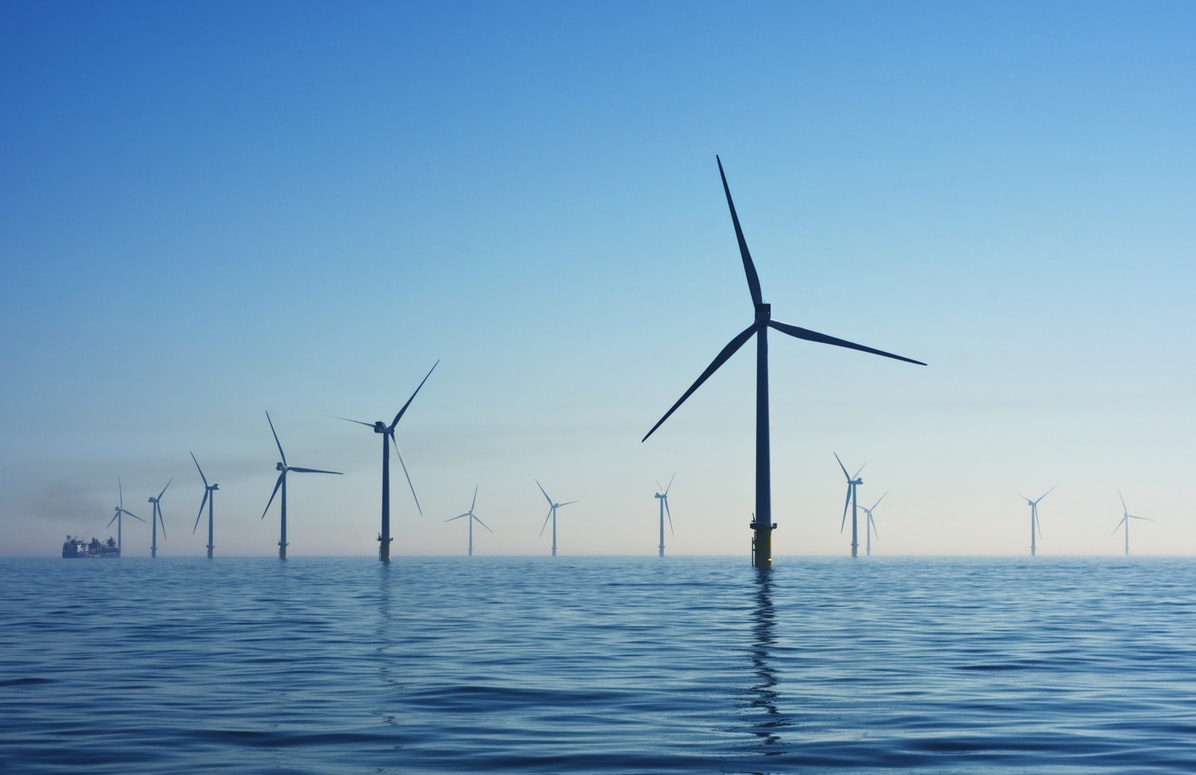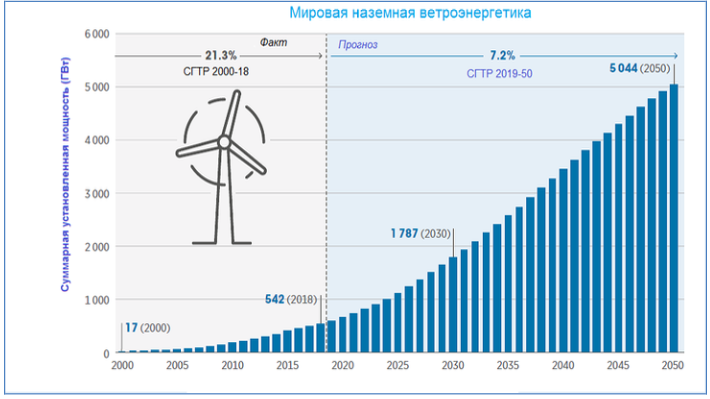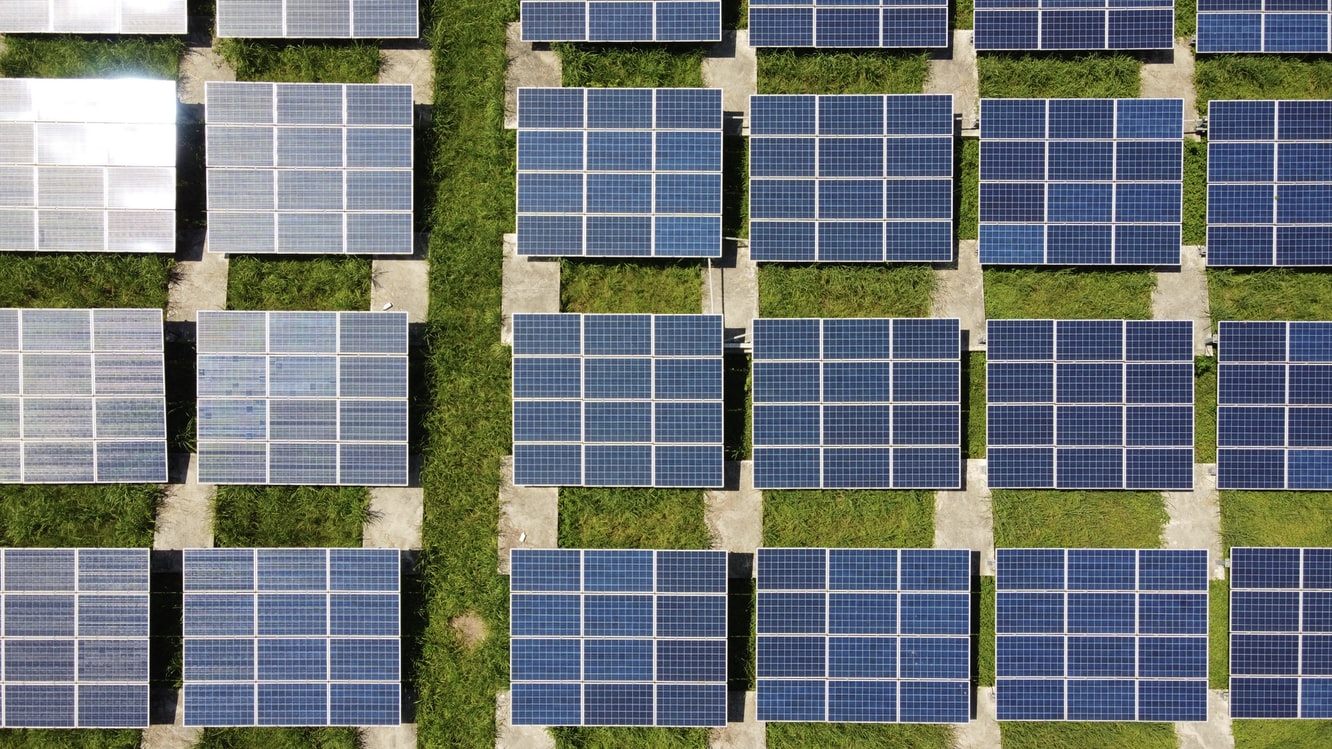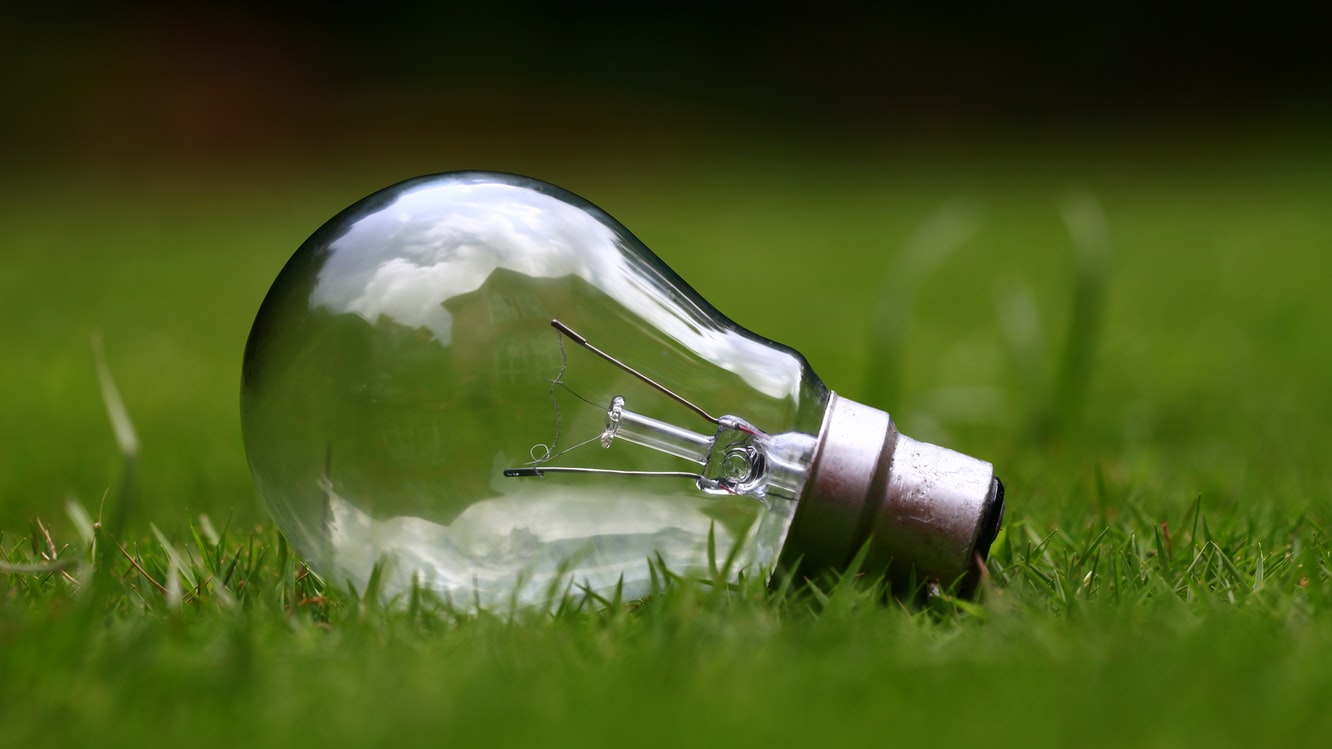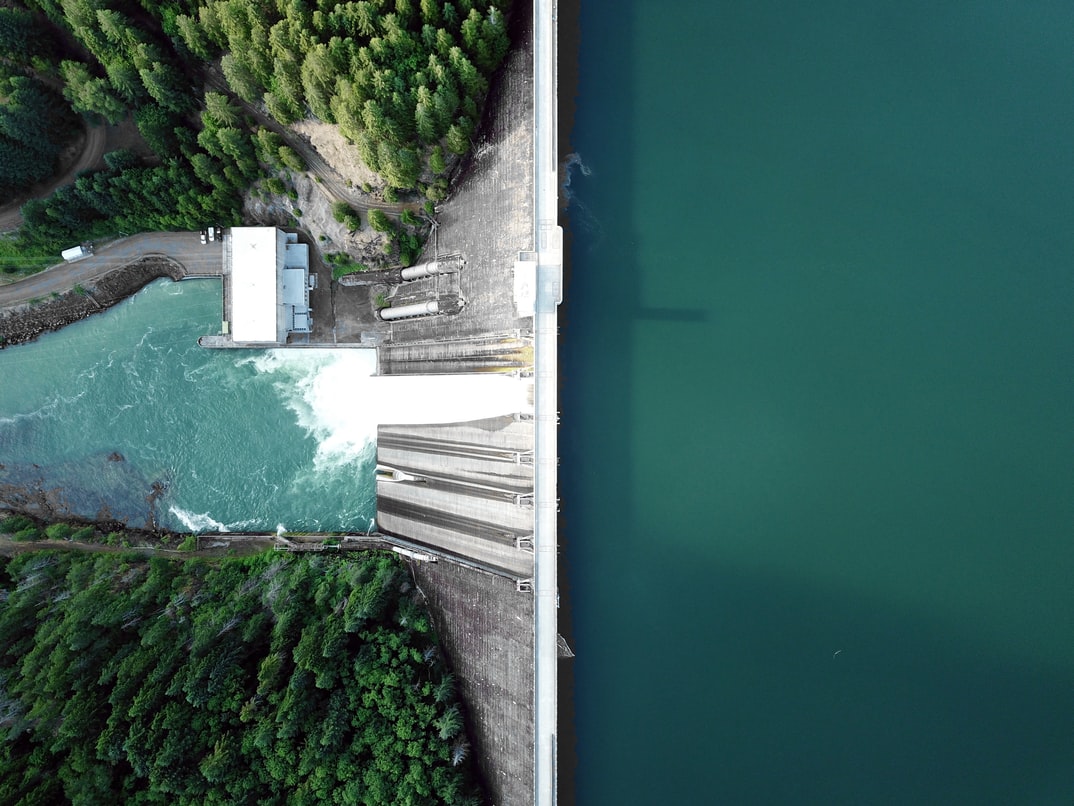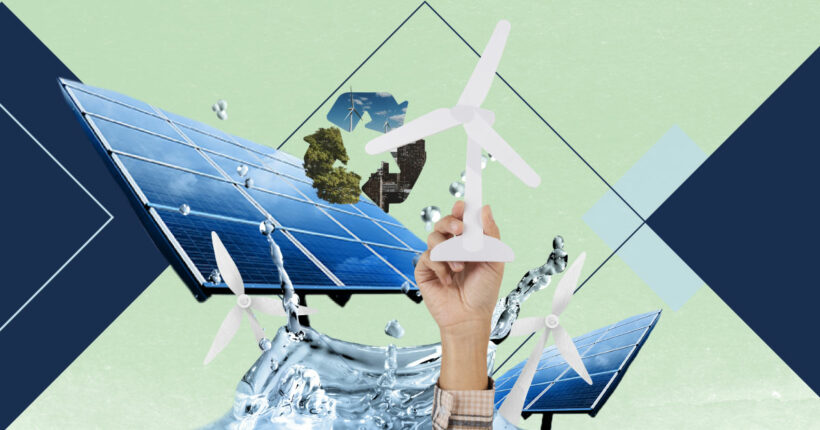
A report by the Intergovernmental Panel on Climate Change, published in 2018, states that an increase in temperature of even 1.5 °C will lead to irreversible changes in the environment. According to scientists, to limit global warming below 1.5 °C, humanity must reduce CO2 emissions by 45% by 2030 compared to 2010. A zero balance needs to be reached by 2050 when all anthropogenic CO2 emissions will be absorbed by ecosystems. This can be done by changing the approach to energy production and using environmentally friendly renewable energy sources.
This is how the distribution between energy sources in Eastern Europe, the Caucasus, and Central Asia looks now. Most countries heavily depend on imports of fossil fuels, oil and gas, but a significant share of electricity is also generated by renewable sources, and this share is growing every year.
For example, according to UNDP Renewable Energy Snapshots in 2014, in Ukraine, it was less than 1% of the total energy produced, and in 2020, according to Ukrenergo, it increased to 6.8%. But the greatest progress can be seen in Moldova, where the share of RES was, as in Ukraine, less than 1% in 2012, and in 2017 reached 20%. We decided to review the most inspiring examples that other countries can focus on when developing their renewable energy sector.
Wind energy can provide electricity to the entire country. Such results can be reached in 7 years
Since 2010, the development of renewable energy sources has accelerated, reaching record levels and outpacing the annual input of traditional capacity in many regions. Among all technologies for the use of renewable energy sources, wind energy has dominated after hydropower for many decades.
IRENA estimates that over the next three decades, onshore wind farms will have an average annual growth rate of more than 7%. This means that by 2030, the total installed capacity of onshore wind energy will increase more than three times to 1,787 GW, and almost 10 times, by 2050, approaching 5,044 GW.
Denmark is one of the first countries to use wind energy as efficiently as possible. In 1985, the country abandoned nuclear power and began actively building wind farms. As a result, more than half of Denmark's electricity is generated from sustainable sources, and by 2028 Denmark can be 100% supplied with energy with a zero carbon footprint. In addition, companies involved in wind energy receive a total revenue of 3 billion euros annually, and the industry provides jobs to 20,000 people. At the same time, the number of jobs is growing; since 1996, it has doubled.
Now Moldova has embarked on the path of active development of RES projects. At this stage, the country is supplied with electricity derived from renewable sources by about 1.15%. But the situation must change by 2022 when the Moldovan government will put into operation a fleet of wind turbines in the country's south. This will provide another 180 MW of electricity generated by RES, increasing the amount of green energy in the country more than 4 times. The project is implemented by Energo Continent at public expense in the villages of Colibași and Brînza, Cahul district. The wind power plant will provide 70 new jobs to residents, and annual production can provide about 15% of the annual electricity consumption of the Republic of Moldova.
Another interesting example is the Zhanatas power plant in Kazakhstan, which was fully launched only earlier this year and has already become the largest wind farm not only in Kazakhstan but in all of Central Asia, with a capacity of over 110 MW generated by 40 turbines. The power plant will meet the electricity needs of 30,000 households, which will significantly alleviate the situation with energy shortages in the south of the country.
Solar energy will help overcome poverty
Over the past two decades, photovoltaics has evolved from a niche market product to one of the main sources of electricity generation. Growth dynamics become less dependent on government incentive programs and are more determined by market investment decisions.
By the end of 2019, the global installed capacity of solar photovoltaic energy has reached 627 GW with a total annual growth rate of almost 43%. Solar energy now remains the second-largest renewable energy sector after wind power; in 2019, solar photovoltaic systems again dominated the total capacity of renewable energy sources with the introduction of a capacity of about 115 GW, which is twice as much as wind and more than and nuclear fuel together.
About half of Georgia's population of four million uses firewood for heating and cooking. Especially in rural areas, people rely on inefficient wood stoves and buy expensive wood. The official volume of firewood provided by the National Forestry Agency of Georgia covers only about 25% of demand, leading to illegal logging and gradual destruction of forests (CENN 2016).
To help address this issue, in 2010 the international non-governmental organization Women of Europe for a Common Future (WECF) launched an EU-funded project to replace wood stoves with solar water heaters. In the past, about 500 solar water heaters have been installed throughout Georgia and taught people the principles of their construction. In 2016, thanks to the training and support of several NGOs, four cooperatives with a total number of 50 members were established. In recent years, about 900 solar water heaters have been installed in Georgia, each of which saves about three cubic meters of wood per year. They help reduce CO2 emissions by 900 tons per year, which roughly corresponds to emissions from 200 cars. The average payback period of the investment is three to six years, so it is also a significant financial saving for farms and a contribution to solving the problem of energy poverty in Georgia. Most rural farms in Georgia meet the "energy poverty" criterion, as they are forced to spend about 30% of their income on fuel (WECF 2015).
To reduce heating costs, you can implement point-by-point bioenergy installations
Biomass accounts for the largest share of the world's energy supply of all renewable energy sources. It provides energy not only for heating and transport but also for electricity production. Including traditional biomass use, bio-energy is estimated to account for 12%, or 45.2 joules (EJ), of total final energy consumption in 2018.
Modern bio-energy, which excludes the traditional use of biomass, provided in 2018 about 19.3 EJ, or 5.1% of total global final energy demand, which is about half of all renewable energy in final energy consumption. Modern bio-energy provides about 8.6% of the world's energy supply used for heating, 3.1% of energy needs in transport, and 2.1% of the world's total energy supply.
In 2017, biomass and fuel waste covered about 6% of the cement industry's energy needs, mainly in Europe, where they provided about 25% of the energy used in cement production.
Currently, power systems used for heating with biofuels are being implemented in Ukraine. For example, in schools in the villages of Trytuzne and Nadezhdivka in the Solone district of the Dnipropetrovsk region, boiler houses operated on natural gas or coal on obsolete equipment that required prompt replacement. The problem was solved thanks to KSG Agro's investment of UAH 1.5 million in two new boiler houses in the Solone district, with a total capacity of 1 MW. The re-equipment will allow local councils, on the territory of which schools are located, to save up to 40% of heat bills.
Geothermal energy can be used in the Carpathians
Geothermal resources are used for energy production in two main ways: either through the production of electricity or through various thermal applications for "direct use" (without conversion to electricity), such as space heating and industrial heat input. According to the International Renewable Energy Agency (IRENA), the installed capacity of all geothermal plants in the world reaches almost 13 GW; this is comparable to the capacity of 13 nuclear reactors.
The economic use of geothermal sources is widespread in New Zealand, Italy, and France, Lithuania, Mexico, Nicaragua, Costa Rica, the Philippines, Indonesia, China, Japan, Kenya, and Tajikistan, but the leader is Iceland, where geothermal energy has been used for over 70 years. There are no large deposits of fossil fuels in this country, and it would be very expensive to import them. That is why Icelanders have focused on geothermal springs, which allows them to heat homes and greenhouses for growing vegetables all year round. 700 geothermal stations provide 60% of all generated thermal energy, which is then heated. It is thanks to this type of renewable energy that Iceland has become an independent country.
As for electricity, 25% of all electricity in the country is generated by district heating geothermal power plants; there are five in the country. One of them, the geothermal region of the Reykjanes Peninsula, was formed as a result of the movement of lithosphere plates, which form the Mid-Ocean Ridge. The area where the earth's subsoil is "extracted" is small, about 2 square kilometers, but for more than 30 years it has been producing energy without any signs of declining reserves.
Another geothermal station, Svartsengi, is located near Keflavik International Airport on the Reykjanes Peninsula. It produces 76.5 MW of energy and about 475 liters of hot water (90 °C) per second. Excess hot mineral water enters the reservoir of the Blue Lagoon resort, one of the symbols of Iceland; another "plus" adds to the karma of geothermal energy, the development of tourism.
Russia also has a great potential for the use of geothermal energy. So far, it is used only in the Kamchatka Territory, although the potential is much greater. This type of energy in the Kamchatka Territory accounts for about a third of heat and light generation. This is one of the record figures in the country. Kamchatka was the first region to develop subsoil heat technology during the Soviet era. In 1966, the Pauzhetskaya geothermal power station with a capacity of 11 MW was built, and its energy sources were the volcanoes of Kambalny and Koshelev. In December 1999, the Verhne-Mutnovskaya geoelectric power plant was put into operation. Its installations produced 12 MW. Two years later, the first unit of the largest Mutnovskaya geoelectric power plant in Russia at 25 MW was launched. In October 2002, its capacity was increased to 50 MW. In general, the reserves of the Mutnovsky steam-hydrothermal field are sufficient for 300 MW power plants.
Ukraine also has some potential for geothermal energy development. The projected operational resources of thermal waters in Ukraine in terms of heat reserves are equivalent to the use of about 10 million tons of conventional fuel per year. This is due to the hydrogeological features of the terrain and the features of the country's geothermal resources. However, currently, scientific, geological exploration, and practical work in Ukraine focuses only on geothermal resources, which are represented by thermal waters. The practical development of thermal waters in Ukraine was carried out on the territory of the Autonomous Republic of Crimea occupied by Russia, where 11 geothermal circulation systems were built, which correspond to modern technologies of geothermal heat production of the earth. All geothermal plants operated at the experimental-industrial stage.
According to the information provided by the Ministry of State Energy Efficiency of Ukraine, large reserves of thermal water were found in Chernihiv, Poltava, Kharkiv, Luhansk, and Sumy regions. Hundreds of wells in which thermal water has been detected are in conservation but can be restored for further operation as geothermal heat production systems. The National Energy Agency of Iceland even conducted a study "Geothermal Policy and Tools for Ukraine," which showed significant potential for the development of geothermal projects in the western regions of Ukraine.
With the help of hydroelectric power plants, it is possible to electrify mountainous hard-to-reach areas where people live
Hydropower production around the world varies from year to year, which is affected not only by changes in installed capacity but even more by changes in weather and other local operating conditions. It is estimated that in 2019, global electricity generation amounted to 4,306 TW, which is 2.3% more than in 2018, or about 15.9% of total electricity production in the world.
Climate change poses an increased risk to the industry, but recently the industry has increasingly included climate variability and its impact on hydrological conditions in planning, design, and operational plans.
Among the countries of Eastern Europe, the Caucasus, and Central Asia, Tajikistan has large hydropower resources, but they are still sold only by about 5%. The Republic of Tajikistan ranks 8th in the world in terms of potential for hydropower generation; they are estimated at 527 billion kW. Among the CIS countries, this country is second only to Russia. Tajikistan has significant energy reserves of RES resources. More than 285 operating small hydropower plants with a capacity of 5 to 4300 kW have been registered in the country. Of this number, 16 small HPPs have been built and are operated by OAO Barki Tochyk and are state-owned. Pamir Energy operates eleven small and mini-hydropower plants with a total installed capacity of 44.16 MW.
In one of the mountainous regions of Tajikistan in the territory of Gorno-Badakhshan, the first private energy project based on the PPP model (Private Public Partnership) was implemented and in 2002, the company OJSC "Pamir Energy" was established. The company was established to restore and rehabilitate the power supply system of the Gorno-Badakhshan Autonomous Region and built 11 hydroelectric power plants that helped electrify mountain villages and develop the area economically: Khorog residents and most residents of the Gorno-Badakhshan Autonomous Region received continuous electricity supply. In 2008, the company began exporting electricity to neighboring Afghanistan.
The creation of the company results from joint investments of the Aga Khan Foundation for Economic Development and the International Finance Corporation. Investments made by FAHER, IFC, the Swiss government, and a World Bank loan to the government of Tajikistan totaled about $27 billion.
What awaits us in the future?
According to the forecast of the International Energy Agency WEO-2019 and the Roadmap for Global Energy Transformation, it is expected that by 2050 the share of renewable energy in a generation will be 85%, compared to about 25% in 2017. Solar and wind power will be in the lead, increasing from 800 GW today to 13,000 GW by 2050. In addition, the production of geothermal energy, bioenergy, and hydropower will increase by 800 GW during the period. The annual increase in installed renewable energy capacity will double to about 400 GW per year, 80% of which will be variable generation technologies such as solar and wind energy. Decentralized renewable energy production will increase from 2% of total production today to 21% by 2050, i.e. increase of 10 times.
Photo Unsplash
Newsletter
Digest of the most interesting news: just about the main thing



